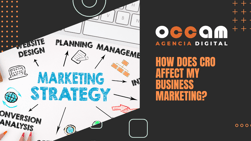Index Content
Satisfying customers' needs and expectations through products or services is the main objective of a company. Customers come back to buy when a company delivers on its promises. If this happens, our customers become the main spokespersons for our brand. However, to gain their trust we must not only focus on sales, but on building relationships. And to achieve this, there are strategies to build customer loyalty and make sure they never leave again.
For a company to last over time, it is important to put the customer at the centre of operations and understand what they really want and need. Empathy is the best ally to gain customer trust, so do not forget to use it to understand everything from the customer's perspective. In this way, your company will win in the short or long term, but it will win. It is essential to always keep the customer present, solving their problems, speeding up and accompanying their purchases, making them feel unique and special to your business and rewarding them for their loyalty. It is essential to understand that what is best for your customers is best for your business.
No matter the size of the company, they all need to implement strategies to build customer loyalty. None of them can run away from this. Providing experiences is the most important thing, because this way a customer who has tried your product or service for the first time will want to come back because of this good experience. The objective is to retain a customer so that he/she keeps looking for your brand and if this person is completely satisfied, be sure that he/she will come back.
5 strategies for customer loyalty
1. Humanise customer service:
One of the main complaints about customer service is that it feels robotic or unnatural, even if the user is interacting with people and not answering machines. Serve your customers with empathy, sympathy and understanding. It is key that you can generate a sense of closeness with your customers so that a relationship is generated and they return to your company.
A study reveals that 83% of consumers believe that talking to a person will always be important in customer service. So, even if processes and communication are automated through technology, don't stop worrying about taking care of the relationship with your customers.
2. Personalise the experience
It is important that you know the name of the person you are talking to, what they need, when their birthday is and even the breed of their dog. If you have access to a specific preference or situation of your customer, use this information for the next interaction. These kinds of details will make a difference and will make you please your customer and achieve that feeling of closeness with your company.
Continue the conversation after the sale. For example, if you are a B2B company, you can search for the user profile on LinkedIn and analyse your customer's information. This way you can start thinking of ways to provide value or solutions that your customer might be looking for.
3. Create a loyalty programme
Don't forget that the relationship doesn't end with the purchase. This is a marketing strategy designed as part of a customer relationship plan that seeks to recognise good buying behaviour. The main objective is to make the customer loyal to the brand. The important thing is to create a consumption goal and let the customer understand that they win if they stay loyal to your brand.
Some of the most frequent loyalty programmes are the famous stamp cards or VIP cards. Also, don't forget to offer birthday benefits such as a gift or a discount, as this allows you to keep your customers and keep them happy. Don't neglect your oldest customers by offering them exclusive experiences that reinforce their relationship with your brand.
4. Pay attention to metrics
It is important to analyse your company's costs and investment capacity. We recommend you to monitor metrics and keep an eye on the indicators to know which actions are achieving the best results. Three metrics that can help you are NPS Index, Churn Rate and Churn Rate. Thanks to NPS you can know the opinion and satisfaction level of your customers through a simple question: Would you recommend this company to a friend?
Likewise, the wallet share is the percentage of spending that the customer makes in your company with respect to the total spending in companies of the same sector. To calculate it you can use the tool The Wallet Allocation Rule that links the most common satisfaction and loyalty metrics with the wallet share. Finally, thanks to the churn rate you can measure the percentage of customers who abandon your brand and the quality and profitability of these customers. It is simple: to apply it you just have to divide the existing customers by those who have abandoned, which gives you a certain percentage. That would be your churn rate.
5. E-mail marketing
Relationship means communication, so it is important that you talk to your customers. E-mail marketing is one of the customer loyalty strategies that you should implement if you want to keep in touch. Thanks to this strategy you can manage your customers by considering their particularities and consumer profiles through segmentation.
Creating a continuous communication allows you to evaluate how the user feels about your brand and offer possible solutions if a problem has arisen or if you notice that something is not right. We recommend sending a monthly email and do not fill the customer's email with spam. Try to inform about your company's news such as product launches, events and interesting content.
These were some strategies to build customer loyalty and we hope you can implement them and get the results you expect. Do not forget that blogs, videos, e-books and other content are very useful for users to leave their contact details and become a lead, which can mark the beginning of a beautiful friendship.





